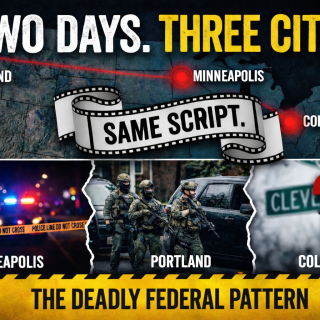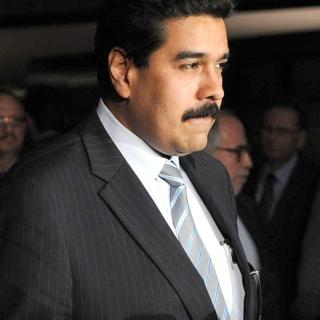Advertisement
We live in an age of division. As the briefest glance at news media shows, contemporary universities are so often centers of differences, contradictions, and clashes between knowledge and ignorance off- and on-campus. One revealing site of combat is the false opposition of the faculty and the—to faculty and academic administration—second-class “professionals” in departments of student affairs and student life. This dichotomy, and its underlying both real and imaginary conflicts, critically parallels those between “learning and earning,” humanities’ core curriculum and “great books” vs. STEM and business education, curriculum vs. extracurriculum, and on-campus vs. off-campus life.
In this essay, as a retired humanities professor who taught for almost half a century at three public universities in large cities, and who lives in my city’s University District, I propose to seize on the strengths of both sides of what I see as a fallacious and harmful dichotomy. I seek to bring them closer together in the interests of undergraduate, graduate, and professional students, the suffering health of our universities, the advancement of young adults, and the needs of our nation.
My approach emphasizes integration and interdisciplinarity rather than dichotomization and division. I strive for the intellectual underpinnings of a grounded, civic, and ethical education for a student body that confronts an unpredictable future. I actively seek new forms of cross-campus collaboration, identifying and combining the strengths of faculty, student affairs, other non-faculty groups, and the community in order to work cooperatively.
Both Offices of Student Life/Student Affairs and Academic Affairs repeat slogans about their focus on serving their students inside and outside classrooms and dormitories. The slogans have changed little since my undergraduate years in the late-1960s. Ohio State repeatedly promotes empty, rhetorical promises of its never-defined but always exceptional “student experience.” The fact remains that genuine, student-centered learning; off-campus “theme houses” of a wide variety; and broadly conceived “civic education” that connects in-class and out-of-class learning—which students deeply desire—all remain rare.
To contemplate this requires scrutiny of existing agendas; establishing common goals; undertaking a responsible, respectful, and equitable division of labor; and balancing the independence and collaboration of different parties. We must reduce opposition and competition, especially for priorities, budgets, and positions.
I challenge recent commentators who exaggerate, misrepresent, and implicitly and/or explicitly defend their asserted “sides” for reasons that typically stem from a combination of historical ignorance, false opposition, self-promotion, and insecurity. Unacknowledged but closely related are inaccurate, anachronistic defenders of a humanities-centered core that rarely if ever existed.
As I began to contemplate writing, the American Academy of Arts and Sciences published an important report on humanities graduates. University and media attention concentrates on the, to them, surprising finding that the majority of humanities graduates do not regret their choice of majors. The more important and at least superficially challenging result is that “close to one-half felt that their undergraduate institution did not prepare them for life and regret their choice of major.” What stands out is the reference to “institution” and “not prepare for life.” That cannot be the responsibility of students’ majors, student affairs, or students each working separately.
Shortly thereafter, an international perspective underscored the present-day imperative. An unusual UNESCO International Commission on the Futures of Education study responded to “growing social transformation, democratic backsliding, the crisis of climate change, and growing exclusion.” Universities are seen as the leaders of mandated changes. The report emphasizes the ways in which universities need to broaden their audiences and their approaches.
As these new studies emphasize, my perspective stresses how false and historically inaccurate are the efforts of some professors to dichotomize and divide. Their subordination of student affairs to the disciplinary curriculum and supposedly rightful and historical control of the faculty is ahistorical and inaccurate. In the process, unacknowledged conservatives like Martha McCaughey and Scott Welsh, in essays like “The Shadow Curriculum of Student Affairs: Student affairs is encroaching on areas long held to be faculty responsibilities,” dramatically limit the contributions of both elements and harm the intended beneficiaries: the students.
These authors appropriate out of context and without attribution the notion of a “shadow curriculum” developed to study K-12 and especially high schools (itself appropriated from notions of “shadow governments” and “shadow court dockets”). They rhetorically connect it to the highly variable and uneven efforts of student life programs to expand the social, cultural, and political awareness and preparation of undergraduates. With inadequate, undetailed, and unrepresentative examples, they ideologically caricature student affairs, which they condemn in contrast to the disciplinary professoriate—whom they uncritically, ahistorically, and ignorantly laud. Much of McCaughey and Welsh’s failing case pivots on an unclear effort to reclaim faculty control over the curriculum and “academic freedoms” that never existed broadly.
The resulting argument harms the efforts of all parties, and especially students. Revealingly, McCaughey and Welsh express far less interest in and concern about students than for their partisan and privileged view of some but not all faculty. These are expressions of grievance and fear. They bear little resemblance to life on real American campuses. (See the comments on the Academe website on this blog post for revealing divisions among respondents, and note which side presents historical and contemporary evidence and which only repeats dog-whistles.)
We must leap over these obstructionists to confront the present and contemplate possible futures. To begin, consider my essays on the necessity of teaching and learning civics on all levels of education, “Civics test should be required to hold public office,” and on academics’ imperative need for living historical memory. Preparation for self-aware, responsible, and participatory life at home, at work, in the community, and for the nation demand historically informed and contextualized civic education, across all disciplines and interdisciplines—from the humanities to the sciences, STEM, and business—at appropriate levels. “Divisive,” “uncomfortable,” challenging, and difficult subjects and concepts all lie at the core. All surveys confirm that young people, their families, their prospective employers, and the population at large strongly support education that embraces a broad commitment to inclusiveness, diversity, and challenge. It takes more than a village.
To introduce one topic that demands several essays in itself, a commitment to a nonpartisan education in civics must span and integrate the curriculum and the extra-curriculum together, from residential life to responsible (not slogan-based or narrowly vocational) theme houses, general education and disciplinary and/or interdisciplinary concentrations, in-class and out-of-class, on- and off-campus learning.
A major step lies in faculty and academic administration’s reconsideration with appropriate seriousness, and proper humility, student affairs’ initiatives to which McCaughey and Welsh object. They begin with “matters with which the student affairs staff is concerned, including suicide prevention, sexual assault, graduating in under five years, the use of students’ preferred pronouns, and fostering inclusive classrooms—just to name a few.” Of course, faculty are also, and should be “concerned” with these. But McCaughey and Welsh do not seek to build cooperatively.
They continue accusingly, pejoratively, and falsely: “While such training sessions have an important place within higher education, they also suggest a blurring of boundaries between a concern with attending to the broader lives of students on college campuses and the curricular responsibilities of faculty. When the faculty [are] construed as needing to be responsive to student affairs and student development mandates, such seemingly innocent professional development opportunities can grow uncomfortably close to an encroachment on faculty responsibility for the educational mission of colleges and universities.”
Their final false distinction all but burns bridges of collaboration, with all sides cooperatively contributing from its strengths toward common goals. “A broader problem emerges when the style of intellection [sic] preferred by student affairs begins to compete with the spirit of questioning and inquiry that guides the educational mission of colleges and universities as carried out by the faculty.” I do not know what they mean by this.
McCaughey and Welsh’s division does not meet the grounds or the needs of theory or practice. Superficially at best, they assert, “When it comes to social problems, faculty members ask research questions and consider relevant methods. In the classroom, they present contending studies and teach students how to read complicated literatures critically. In contrast, staff in student affairs often see their mission as directly addressing social problems head-on, sometimes beginning with efforts to ‘clarify collective morals’ and almost always concluding with varied attempts to ‘eliminate systemic injustices and amplify practices that dismantle discrimination against all identities’ (in the words of a typical mission statement, from UNC Chapel Hill’s Student Affairs division).”
This is right-wing parody. Without systematic research and evidence, this is fallacious; it ignorantly demeans student affairs and elevates faculty, all out of meaningful contexts. Students disappear from their out-of-focus picture.
An excellent case in point to which they obliquely allude is the ideologically exaggerated issue of the present moment of “student free speech,” “discomfort,” and “insecurity.” The lack of reliable, representative evidence; absence of definitions; and ignorance of the First Amendment, relevant case law, the history of free speech struggles on- and off-campus, and even of typically outdated campus codes only stimulates conflicts and an overflow of countless contradictions. In contrast to McCaughey and Welsh’s distortions, we have a compelling and absolutely necessary opportunity to interconnect formally and informally student affairs programming and advising with faculty in classrooms, office hours, and forums, law schools and other professional schools on campus, and a variety of off-campus, “real world” institutions and environments.
The needs and opportunities are endless, and profound. Students want a genuinely broad and inclusive, integrating education. They want more cross-generational contacts with knowledgeable, responsible professors, advisors, and neighbors. We ignore these imperatives to rethink our “missions” at great present-day and future peril. They are much more complicated than our slogans admit. We must recognize compelling needs, opportunities, and human and institutional resources; and reorganize to meet the moment and prepare for the future(s).
Students’ dissatisfaction during their undergraduate years and after graduation joins with the broadly based economic, social, cultural, and political criticisms of higher education to demand our full action.
References
Samuel J. Abrams, “Liberal arts colleges need to better connect with their students,” Times Higher Education, Mar. 5, 2022
Harvey J. Graff, “A post-retirement career as a public academic meets the moment’s need,” Times Higher Education, Sept 18, 2021
_____, “Civics test should be required to hold public office,” Inside Higher Education, Oct. 21, 2021
_____, “History lessons can help disciplines to survive,” Times Higher Education, Oct. 30, 2021
_____, “The Banality of University Slogans,” Washington Monthly, Jan. 10, 2022
_____, “Essay critical of Louis Menand’s book review is disappointing,” Chronicle of Higher Education, Jan. 12, 2022
_____, “Slogans are no substitute for concrete university policies and programmes,” Times Higher Education, Jan. 17, 2022
_____, “Sloganeering and the Limits of Leadership,” Academe Blog, Jan. 19, 2022
_____, “A call to colleagues: Speak out and support children, teachers, librarians, and free speech—and the present and future of your own institutions, too,” American Historical Association Member Forum, Feb. 16, 2022
_____. “Should colleges make anti-racism part of their mission?” Chronicle of Higher Education, Mar. 22, 2022
_____, “Teaching outside the box: A retired professor’s continuing education,” Inside Higher Education, Mar.25, 2022
_____. “Ignore the books: there is no single Big Problem with higher education,” Times Higher Education, Apr. 2, 2022
_____, “How Columbus, Ohio State University, and major developers destroyed a historic neighborhood,” Busting Myths, Columbus Free Press, Part One, Apr. 26, 2022; Part Two, April 29, 2022; “A continuing saga,” May2, 2022
_____, “Myths Shape the Continuing ‘Crisis of the Humanities,’” Inside Higher Education, May 6, 2022
_____., “Universities are not giving students the classes or support they need,” Times Higher Education, May 17, 2022
_____, “The inseparability of ‘historical myths’ and ‘permanent crises’ in the humanities,” forthcomin
_____, “The Fallacies of ‘the Shadow Curriculum,’” Academe Blog, July 1, 2022
Michael B. Katz, “The moral crisis of university,” in his Reconstructing American Education, Harvard University Press, 1987, 160-183
Paul Mattingly, American Academic Cultures. University of Chicago Press, 2017
Martha McCaughey and Scott Welsh, “The Shadow Curriculum of Student Affairs: Student affairs is encroaching on areas long held to be faculty responsibilities,” AAUP Academe, Fall, 2021
Steven Mintz, “An epidemic of student engagement,” Higher Ed Gamma, Inside Higher Education, Apr. 14, 2022
_____, “Can civics education in colleges strengthen democracy?” Higher Ed Gamma, Oct. 6, 2021
John Morgan, “Transform teaching and access to tackle crises, universities told,” Times Higher Education, Nov. 11, 2021
Rachel Toor, “Rethinking the faculty role in students’ career readiness,” Inside Higher Education, Jan. 18, 2002
David Wippman and Glenn C. Altschuler, “How to protect and promote campus civility,” Inside Higher Education, Feb. 7, 2022
------------------------------------------------------------------
Harvey J. Graff is Professor Emeritus of English and History at The Ohio State University and inaugural Ohio Eminent Scholar in Literacy Studies. Author of many books on social history, the history of literacy and education, and interdisciplinarity, he writes about the history and contemporary condition of higher education for Times Higher Education, Inside Higher Education, Academe Blog, Washington Monthly, Publishers Weekly, Against the Current; Columbus Free Press, and newspapers. Searching for Literacy: The Social and Intellectual Origins of Literacy Studies is published by Palgrave Macmillan in August. My Life with Literacy: A Historian’s Continuing Education is forthcoming.



